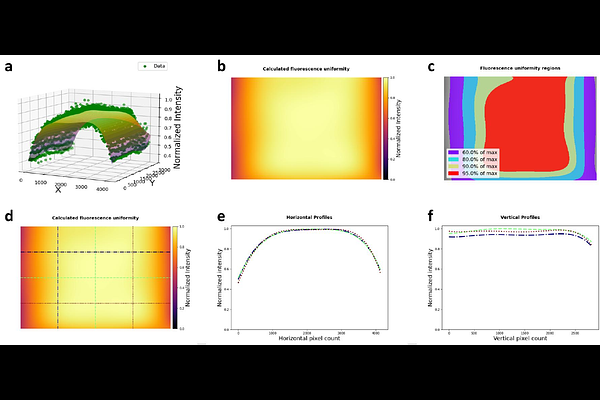A Phantom for Fluorescence Uniformity and Distortion Assessment of Near-Infrared Fluorescence Guided Surgery Systems

A Phantom for Fluorescence Uniformity and Distortion Assessment of Near-Infrared Fluorescence Guided Surgery Systems
Mannoh, E.; Robledo, E. A.; Streeter, S. S.; LaRochelle, E. P. M.; Ruiz, A. J.
AbstractSignificance: The expanding use of fluorescence in surgery necessitates standardized characterization methods to facilitate reproducibility and regulatory review of imaging devices. Current guidelines suggest the use of optical phantoms as tools to quantify optical system performance, yet measurements of uniformity and spatial accuracy or distortion remain challenging and are performed in an ad hoc manner or not collected at all. Aim: This work introduces a photostable solid phantom, the Reference Uniformity and Distortion (RUD) phantom, and accompanying analysis code for characterizing fluorescence uniformity and geometric distortion. Additionally, the concept of fluorescence flat-field correction is explored using this phantom. Approach: The RUD phantom was imaged on a custom fluorescence imaging device, as well as five commercial systems. The analysis code characterized uniformity and distortion in these systems. Flat-field correction was explored on the custom device by imaging solid fluorescent reference phantoms at different locations within the field of view. Results: Successful characterization of the imaging systems\' uniformity and geometric distortion was achieved. Flat-fielding experiments showed that while it qualitatively improves the appearance of images, it could negatively impact quantitative analyses. Conclusions: The RUD addresses the need for standardized characterization of fluorescence uniformity and geometric distortion. While fluorescence flat-field correction qualitatively enhances image uniformity, caution is advised as it may adversely affect quantitative accuracy.